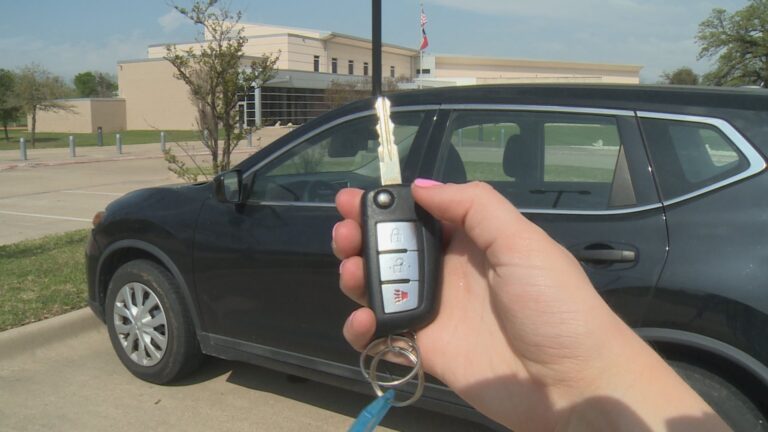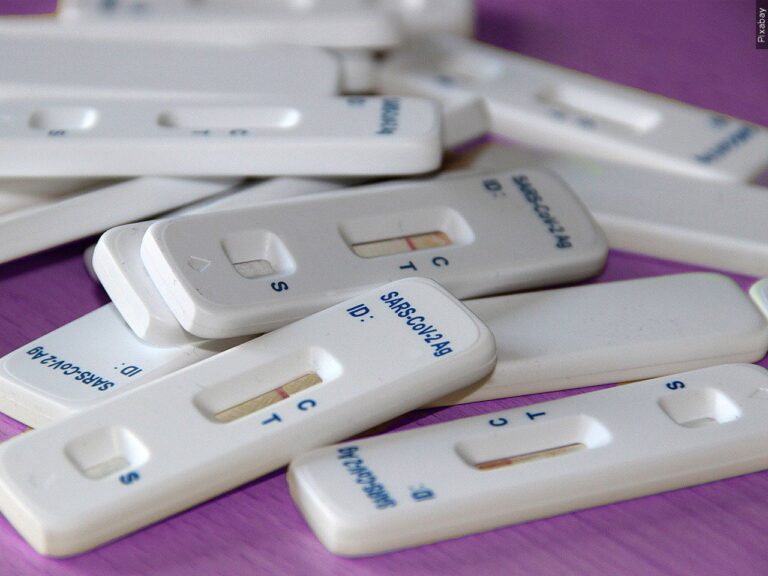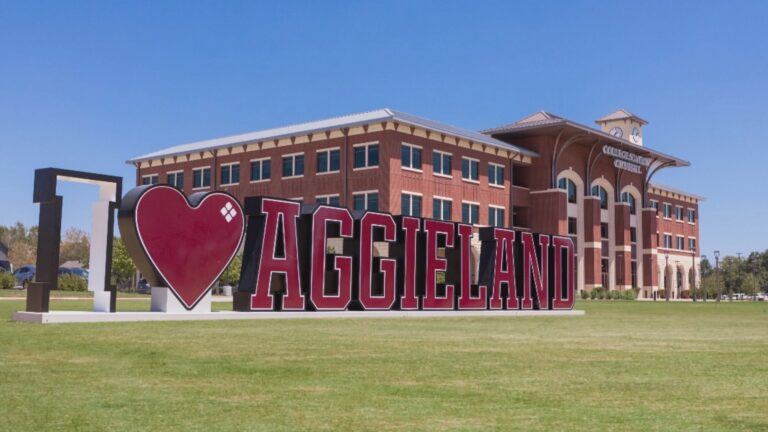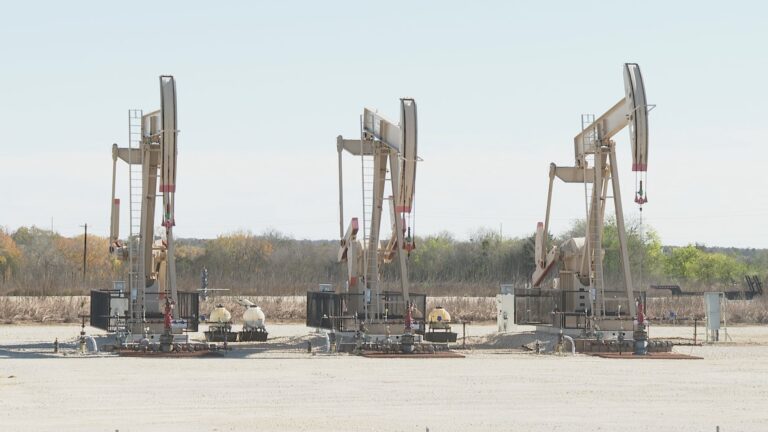CenterPoint draws state ire after Hurricane Beryl power outages. Here’s what you need to know.
“CenterPoint draws state ire after Hurricane Beryl power outages. Here’s what you need to know.” was first published by The Texas Tribune, a nonprofit, nonpartisan media organization that informs Texans — and engages with them — about public policy, politics, government and statewide issues.
When Hurricane Beryl swept through southeast Texas on July 8, its damaging 80-mile-per-hour winds took down thousands of trees and knocked out much of the electricity system. More than 2.6 million Texas power customers went without electricity for days in the summer heat.
In the days that followed the storm, officials and residents alike turned their eyes to the Houston area’s electric utility, CenterPoint Energy. Texans criticized the company for failing to prepare adequately for the storm, communicate clearly with customers and restore power efficiently.
Gov. Greg Abbott threatened the company, legislators quickly called hearings about the outages and the state’s utility regulators launched an investigation.
CenterPoint fumbled communications
For days after the storm, CenterPoint did not offer Texans a clear timeline for when power would be restored and its power outage map was offline. That made it difficult for people to decide whether they should wait it out at their homes without air conditioning or head elsewhere. Houstonians turned to a variety of workarounds to figure out which neighborhoods had power — including using Whataburger’s app to discern where the electricity was flowing.
When the CenterPoint outage map was back online, people said it was unreliable and couldn’t say when they could expect the power to come back on. A week after the storm, hundreds of thousands of customers still had no power.
CenterPoint’s restoration pace drew criticism
At the height of the outages more than 2.6 million Texas households and businesses were in the dark. At least 23 people died from the storm itself and the ensuing power outages.
Houston’s vulnerability to storms is well known. Unlike a winter storm in 2021 where the energy grid struggled to meet demand, Beryl damaged the distribution infrastructure like poles and wires that bring power to homes.
Ed Hirs, an energy expert at the University of Houston, said the power outages during this storm are a product of extended neglect and underinvestment in grid infrastructure by the state and utilities.
But as people waited in the humid, sweltering heat, they looked for who to blame. Many were angered by the speed in which the company was restoring power. Elected officials began to ask why so much distribution infrastructure was damaged and why it was taking so long to fix.
“In most cases when people lose power it’s because powerlines go down, but it’s normally short lived,” said Joshua Rhodes, a research scientist at the University of Texas at Austin. In this case, he added, the response took days.
CenterPoint defended its readiness and electricity restoration pace, which was faster than it had been after previous storms. But people still wanted answers: Was the utility company prepared for the hurricane? Is it prepared for future ones? And what happened to its communications?
Didn’t Texas officials say they fixed the power grid?
After Winter Storm Uri in 2021, when nearly statewide power outages persisted for days the entire electricity grid nearly collapsed, lawmakers decided Texas needed more power to meet demand. They focused their efforts on securing power generation, or fuel that is then turned into electricity, through weatherizing existing facilities and allocating $5 billion to incentivize companies to build more gas-fueled power generators in the state.
But Beryl highlighted the need to strengthen the state’s electrical distribution infrastructure, which transmits already generated electricity to individual customers, against future storms and hurricanes. Energy experts said that could include protecting existing power lines from trees by trimming them, building robust poles out of concrete or plastic and undergrounding power lines where it makes sense.
What oversight does Texas have over utility companies?
In Texas, utilities do not compete with each other, but have designated jurisdictions that they serve. The Public Utility Commission of Texas regulates electricity and oversees utilities like CenterPoint. The PUC commissioners are appointed by Gov. Greg Abbott and their job is to review and approve rates charged by utilities, review the planning and construction of utility infrastructure like power lines and coordinate with utilities on how to prepare and respond to hurricanes or other natural disasters.
Essentially any type of infrastructure project or rate increase utilities like CenterPoint proposes needs to be greenlit by the PUC.
The PUC could punish CenterPoint with a fine for its handling of Hurricane Beryl’s outages. But when disasters strike, Ed Hirs, an energy expert at the University of Houston, said regulators typically skip the fine and rely on the expectation that “the cost of the cleanup is going to be more than enough penalty.”
He said regulators often prefer companies spend money repairing damage rather than sending it to the state as a fine. Regulators also could require CenterPoint to put money into strengthening its infrastructure.
In addition to the PUC’s oversight, utilities must also comply with rules and regulations that the Legislature writes into law.
Public Utility Commission investigating CenterPoint
The PUC is investigating CenterPoint’s preparations and response to Hurricane Beryl. The investigation, which was directed by Gov. Greg Abbott, will look into the company’s emergency plans, vegetation management like tree trimming, infrastructure fortifications, and use of mobile generators. The aim? To uncover the root causes of persistent power outages in Houston and nearby areas.
The PUC must deliver a report with its findings and recommendations to the governor by Dec. 1.
CenterPoint has asked for an extension on its request to raise rates
CenterPoint earlier this year filed an application with the Public Utility Commission of Texas seeking to raise rates to cover costs and keep up with the area’s growth. Utility officials said the average residential bill would increase by about $1.25, according to the company filings.
Utility companies do not make money by doing maintenance like tree trimming or hardening powerlines, but by expanding infrastructure coverage, according to energy experts. But the PUC controls how much money a regulated utility like CenterPoint can make.
To make their case for a rate increase, CenterPoint officials said they now served 300,000 more customers compared to when the company last requested to change its rates in 2019. They expected both population and industrial growth to continue with a shift toward electrification and potential buildout of hydrogen production facilities.
Utility officials said in the filings that they were both expanding the system and keeping up with needed repairs. The company invested more than $6 billion in infrastructure over the past five years while also responding to “unprecedented weather conditions” including drought, winter storms and hurricanes.“Each event had its impact on the system,” said Lynnae Wilson, senior vice president of electric business. “Drought conditions lead to dead or stressed trees that are more susceptible to high winds. Any system damage as a result of weather events in turn caused customer outages.”
The company said it spent $31.9 million on vegetation management in 2022 and increased its spending on reliability projects.
“CenterPoint Houston faces increasingly high expectations from customers in terms of more reliable service and faster restoration following outages, and from regulators and policymakers increasingly concerned with strengthening the electric grid in Texas,” Jason Ryan, executive vice president of regulatory services and government affairs, said in the March 6 filings.
On July 17, after public outrage over Beryl’s mass power outages, CenterPoint requested more time to keep working through the rate case discussions with the other parties involved. Entities such as the Houston Coalition of Cities, Texas Industrial Energy Consumers and Texas Consumer Association were already weighing in on the proposed rate hike. An administrative judge considering the proposed increase requested that parties file status reports by August 2 and every two weeks after.
Regulators are also reviewing CenterPoint’s $2 billion resiliency plan
Utility companies like CenterPoint can choose to create plans to strengthen their electrical systems, according to a law that went into effect last year.
The so-called resiliency plan — if state regulators approve it — is a potential way utilities could start charging more to harden their distribution infrastructure by replacing poles or trimming more trees. In many cases, those costs would be charged to power providers that sell power, which would then likely pass the costs on to residents and businesses.
Michael Webber, an energy resources professor at the University of Texas at Austin, said spending more up front for a stronger electric system would save money and even protect peoples’ lives and health better over the long term. That’s because there would be less damage to infrastructure after storms — and fewer people without power, too.
In its proposed resiliency plan submitted to regulators in April, Centerpoint suggested investing more than $2 billion to strengthen its poles and wires, using federal and state funding to cover some of the costs. The proposal included spending $376 million to replace wooden transmission structures with steel or concrete, and $99 million to replace or brace some 5,000 wooden distribution poles per year from 2025 to 2027.
Energy experts told The Houston Landing that CenterPoint’s proposed funding for the plan is only a fraction of what’s needed for upgrades to protect the system against bad weather. The Landing also reports that plan does not include details on where upgrades will be made and predictions on how many customers might benefit from proposals to harden the distribution infrastructure.
Gov. Greg Abbott wants to know CenterPoint’s plans to keep the power on
Gov. Greg Abbott asked CenterPoint to send his office a detailed plan by the end of July outlining how it plans to protect the power supply through the rest of what is expected to be a busy hurricane season.
Abbott said the plan must include better preparation for linemen who repair damage, increasing the number of workers to restore power and how the company will pre-stage sufficient workers to immediately respond to future outages. He also asked the plan to include details on future trimming trees and removing vegetation that threaten power lines — the leading cause of infrastructure damage during Beryl.
If CenterPoint fails to comply with his request, the governor said he will issue an executive order imposing his own requirements on the company, but it’s not clear what those would be or what direct power he has over the utility. And he said that if the utility is unable to “fix its ongoing problems,” the state would have to reconsider the breadth of the territory it serves.
The governor has asked CenterPoint to remove vegetation around power lines no later than Aug. 31.
Texas House and Senate also looking into the mass power outages
Lt. Gov. Dan Patrick, who leads the Texas Senate, has formed a Special Committee on Hurricane and Tropical Storm Preparedness, Recovery, and Electricity. Its members include several Houston-area and southeastern Texas senators. Sen. Charles Schwertner, R-Georgetown, will chair the committee, with Sen. Phil King, R-Weatherford, as vice chair. The committee will review state and electrical utility company’s preparedness for and responses to hurricanes and tropical storms. The first meeting, open for public testimony, is on July 29.
The House State Affairs committee will meet July 31 to discuss utility resiliency plans and assess utility preparedness, response, and recovery protocols given the recent storms.
Joshua Rhodes, a research scientist at the University of Texas at Austin, said the challenge is utility companies do not make money by doing maintenance like tree trimming or hardening powerlines. Utilities make money by expanding infrastructure coverage. But the PUC controls how much money a regulated utility like CenterPoint can make and the Legislature controls what they can make money on.
He said lawmakers will need to find ways to “incentivize utilities to shift to maintenance” during the legislative session that begins in January.
“During winter storms you can put more clothes and more blankets on, but with heat at some point you just feel it and need AC. The magnitude of the human suffering is large in [Hurricane Beryl] and it will kick off a response,” he said.
Disclosure: CenterPoint Energy, University of Texas at Austin and University of Houston have been financial supporters of The Texas Tribune, a nonprofit, nonpartisan news organization that is funded in part by donations from members, foundations and corporate sponsors. Financial supporters play no role in the Tribune’s journalism. Find a complete list of them here.
This article originally appeared in The Texas Tribune at https://www.texastribune.org/2024/07/25/texas-power-grid-puc-centerpoint-hurricane-beryl/.
The Texas Tribune is a member-supported, nonpartisan newsroom informing and engaging Texans on state politics and policy. Learn more at texastribune.org.







